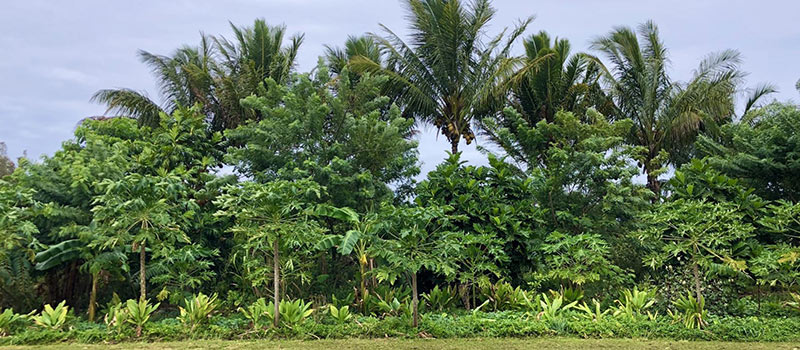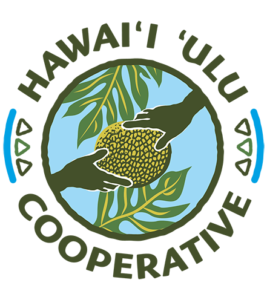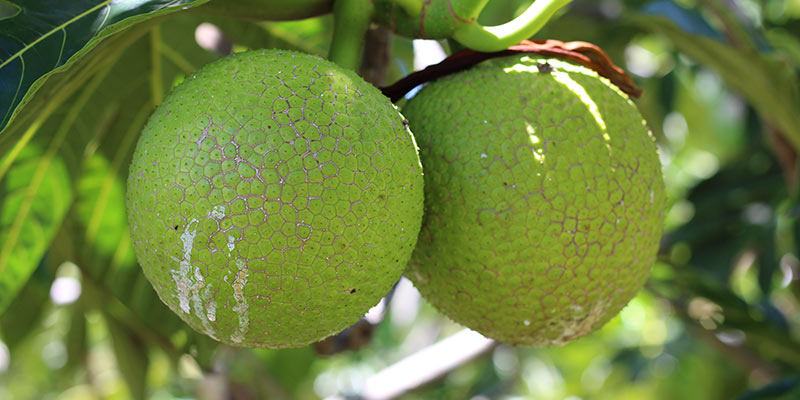ʻUlu Production Primer
This ʻulu production primer was developed with information obtained from currently available literature alongside feedback from partners and practitioners – in collaboration with the University of Hawaiʻi at Mānoa College of Tropical Agriculture and Human Resources (UH CTAHR), Hawaiʻi ʻUlu Cooperative, and Propagate. It is intended to provide a detailed overview of basic breadfruit agroforestry practices for prospective farmers, investors, and other community stakeholders in Hawaiʻi.
General Information & Food Security
Breadfruit or ʻulu is a perennial tree that produces large, carbohydrate-rich fruit. It is seasonally productive, with some variation across varieties and microclimates. Breadfruit can provide food security in locales and soils that are not suited to tillage or ground crops and is a hearty “famine food” that will continually produce with simple maintenance and inputs.

From a culinary perspective, breadfruit is extremely versatile: young, immature fruit resemble artichoke heart when steamed or boiled, while mature fruit – the most common stage for eating- are starchy and usually prepared like a potato; fully ripe fruit is soft and sweet, with a custard-like consistency often used in desserts.
Artocarpus altilis (the scientific name for breadfruit) has been bred and transported across the humid tropics and subtropics for over 4,000 years. Via selective breeding, Polynesians turned the wild ancestor, breadnut, into breadfruit, as they migrated by canoe across the Pacific.
1-2 mature ʻulu trees can supply the carbohydrate requirements for 1 adult human, depending on dietary preferences. 1 acre of mature ʻulu, assuming about 48 trees per acre when using agroforestry practices, can supply the total caloric needs of about 7 adults over 1 year.

With 48 trees per acre (30’x30’), a manager can grow co-crops such as cacao and māmaki between trees, along with crops such as kalo between the rows of trees – especially in the early years. After breadfruit trees have matured, livestock can be introduced into the understory.

